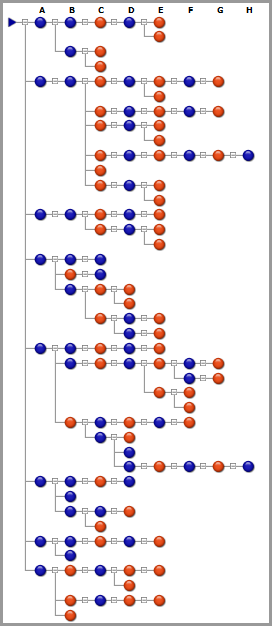
Wikipedia is the most well-known use of wiki software.
Wikis are tools for creating documents that reflect a consensus position. The defining feature of wiki software is that anyone who has access to a wiki document has the ability to edit it. The most current version is available to everyone at the same time. Wikis have been around for a while, but they have become more popular as businesses, non-profit organizations, and government agencies embrace collaborative tools.
VSAS (the enterprise version of AthenaBridge) is a tool that works very well with wikis, because it helps the participants identify the common ground and the points of disagreement before they start to write the consensus document using a wiki.
How Wikis and VSAS are Different: Two Scenarios
VSAS helps organize many ideas in the form of a conversation map; related ideas are displayed near each other. VSAS is different from wikis, because none of the ideas that people publish can be edited by anyone else.
To illustrate why this is important, we’ll create an example scenario where three people are editing a wiki. Person #1 writes the first draft. Person #2 edits the first draft. Person #3 comes along and edits what Person #2 wrote. This situation will work fine as long as each person that comes along is making improvements to the document. If Person #2 makes the document worse, then Person #3 will not be able to see Person #1’s original contribution unless they know to look for it.
If we imagine the same three people using VSAS to accomplish the same task, we will notice some distinct advantages. Person #1 writes the first draft just like before. Next, Person #2 comments on the draft. When Person #3 comes along, she will see both the first draft and Person #2’s comments and will be able to comment on both– not just the most recent version of a wiki.
As additional people come along, they will be able to see the first draft and all the comments. If they were using a wiki, they would only see the most recent version of the document, and they would have to sift through all the previous versions of the document to see the comments of other participants.
Integrating Both Tools into One Workflow
After all the thoughts are captured in a conversation map, then it is time to summarize them in a consensus document like a wiki. In fact, it might be very useful to create to consensus documents– one on the pro side and one on the con side. Because VSAS measures the credibility of each participant, it is possible to grant access to the wiki documents to just the most credible particpants on each side.
Using VSAS in addition to wikis has several significant advantages:
- Diversity of ideas improves the quality of ideas: With just a wiki, previous versions all idea are not readily available. Wikis have an additional assumption that every edit is an improvement. VSAS does not rely on that assumption and instead records and displays each idea.
- Less work for the document’s creator: When participants comment on each other’s ideas, they will synthesize all the comments for you, so that you as the document creator are not left with the monumental task of integrating everyone’s contradicting feedback.
- Less work for the colleagues who are providing feedback: If their ideas are already present as someone else’s feedback, then they can indicate their support of those ideas rather than having to create them on their own.
- Reduces the risk of groupthink: VSAS can allow anonymous feedback if necessary, to ensure an honest conversation that is not disrupted by office politics.

 In association with the Pennsylvania Department of Education we opened our software up to feedback from dozens of teachers across the state. They provided keen insight into how AthenaBridge (formerly DeepDebate) can be used in the classroom in many subject areas in addition to
In association with the Pennsylvania Department of Education we opened our software up to feedback from dozens of teachers across the state. They provided keen insight into how AthenaBridge (formerly DeepDebate) can be used in the classroom in many subject areas in addition to 







